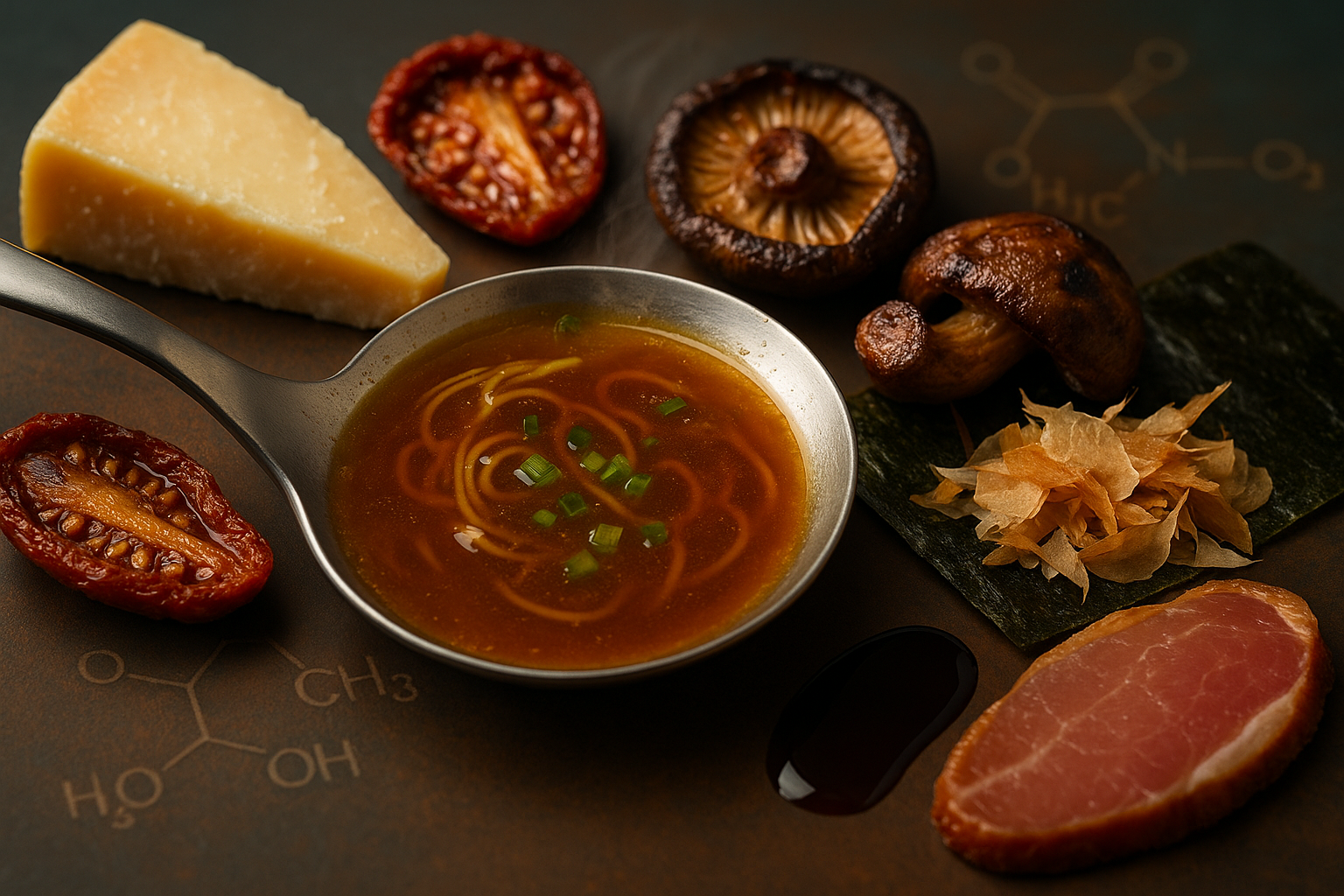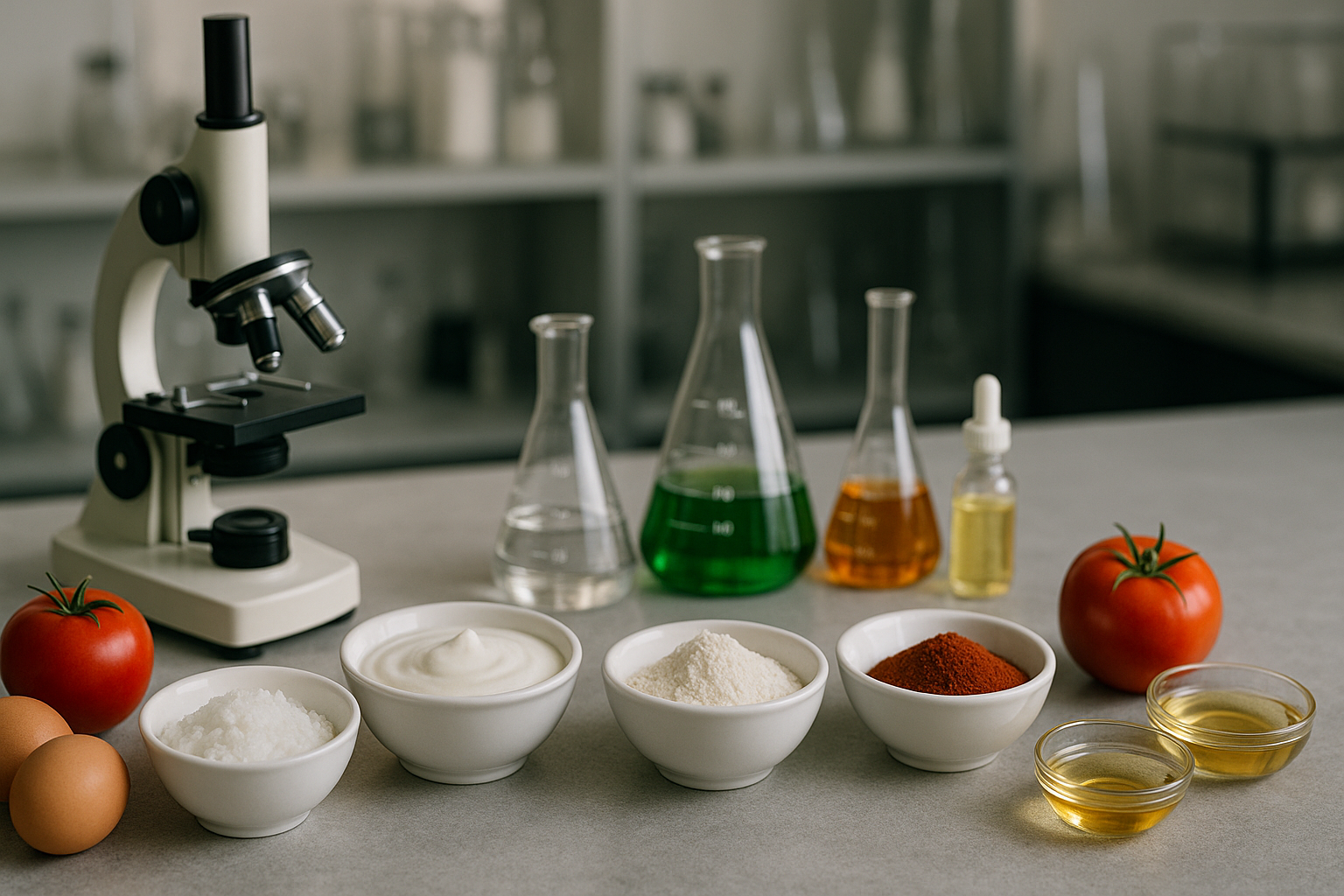Trending searches
Trending searches

The Science of Umami: The Fifth Taste That Changed How We Eat
SUBSCRIBE TO OUR BLOG
Promotions, new products, and recipes.
When you savor the rich depth of a ramen broth or the lingering savoriness of aged Parmesan, you’re tasting umami — a sensation that changed the way scientists understand flavor itself.
The Birth of a New Taste
In 1908, Japanese chemist Kikunae Ikeda isolated glutamate from kombu broth, realizing it produced a distinct taste beyond sweet, sour, salty, or bitter. He named it umami, meaning “pleasant savory taste” from the Japanese word umai (“delicious”).
But it took decades for science to accept it. At the 1985 International Umami Symposium, researchers formally recognized umami as an independent taste. In the early 2000s, the discovery of T1R1/T1R3 receptors confirmed what Ikeda had intuited nearly a century earlier — umami was real, and it had its own biological pathway.
How Umami Works on Your Tongue
Forget the old “tongue map” myth — all taste buds can detect umami, not just one region. When glutamate binds to the T1R1/T1R3 heterodimer or metabotropic glutamate receptors (mGluR1, mGluR4), it triggers a savory signal that the brain perceives as depth and roundness.
Add inosinate (IMP) or guanylate (GMP) — found in meats, mushrooms, and seaweed — and the taste intensity multiplies. In fact, human studies show that IMP lowers glutamate’s taste threshold by more than 95%, explaining why tomato-cheese pizza or dashi broth tastes so irresistibly complete.
What Umami Feels Like
Sensory scientists describe umami as “brothy,” “meaty,” and “mouth-coating.” Unlike sweetness, which arises from sugar molecules, or spiciness, which activates trigeminal heat receptors like TRPV1, umami is a true taste modality — a signal carried by receptors, not nerves.
It’s the flavor note that gives food dimension — the reason soups taste richer after simmering, and sauces develop body when reduced.
Umami, Savory, and MSG — Not the Same Thing
The word “umami” literally translates to “pleasant savory taste”, which is why English speakers often use savory interchangeably. But there’s a distinction: umami is the taste sensation, while monosodium glutamate (MSG) is a compound that delivers that taste.
The U.S. FDA classifies MSG as GRAS (Generally Recognized as Safe), and repeated studies have failed to substantiate the long-debunked “Chinese Restaurant Syndrome.” MSG is, quite simply, one of the purest and safest carriers of the umami sensation.
Making and Enhancing Umami
Natural umami develops when proteins break down through aging, fermentation, or slow cooking, releasing amino acids and nucleotides. Commercial MSG, by contrast, is made via microbial fermentation of carbohydrates, a process pioneered in the 20th century that mirrors the chemistry of fermented foods like miso or soy sauce.
Classic food pairings exploit the synergy of glutamate and nucleotides — think mushrooms with beef, tomatoes with cheese, or kombu with bonito flakes. Even a serving of “umami fries,” dusted with Parmesan and mushroom powder, relies on this same biochemical interplay.
The Health and Future of Umami
Mushrooms — among the most umami-rich and nutrient-dense foods — supply fiber, B-vitamins, antioxidants, and beta-glucans that support immunity and gut health. Scientists now recognize umami compounds not just for taste but for promoting salivation, appetite, and digestive response — key factors in meal satisfaction and satiety.
Why Umami Matters
More than a flavor, umami is balance. It bridges sweet and salty, enhances aroma, and gives dishes their “can’t-stop-eating-it” quality. From Ikeda’s 1908 discovery to the molecular mapping of umami receptors, this taste has reshaped both culinary art and food science — reminding us that flavor is not just a sensation, but a story of chemistry, culture, and connection.

|
About the Author Ed is the founder of Cape Crystal Brands, editor of the Beginner’s Guide to Hydrocolloids, and a passionate advocate for making food science accessible to all. Discover premium ingredients, expert resources, and free formulation tools at capecrystalbrands.com/tools. — Ed |
Related Posts

Citric Acid The Solution to Common Lemon Water Mistakes People Make

Can Saffron Improve Mood and Libido? A Natural Approach to Wellness

The Most Powerful Food Science Questions Journalists Are Asking Today
Enjoyed this post? Subscribe to The Crystal Scoop
Food-science tips, ingredient know-how, and recipes. No spam—unsubscribe anytime.
- Choosing a selection results in a full page refresh.
POLICY PAGES
QUICK LINKS
Guar Gum
Cape Crystal Brands, 18 Bank St., Suite 1, Summit NJ 07901.
- Phone: +1 908-273-5600
- Email: info@capecrystalbrands.com
- Tax ID: 26-2477626000
- FDA Facility Registration # 16980627550
- Kosher Certified: OKosher.org
Country/region
© 2025, Cape Crystal Brands | Sitemap
